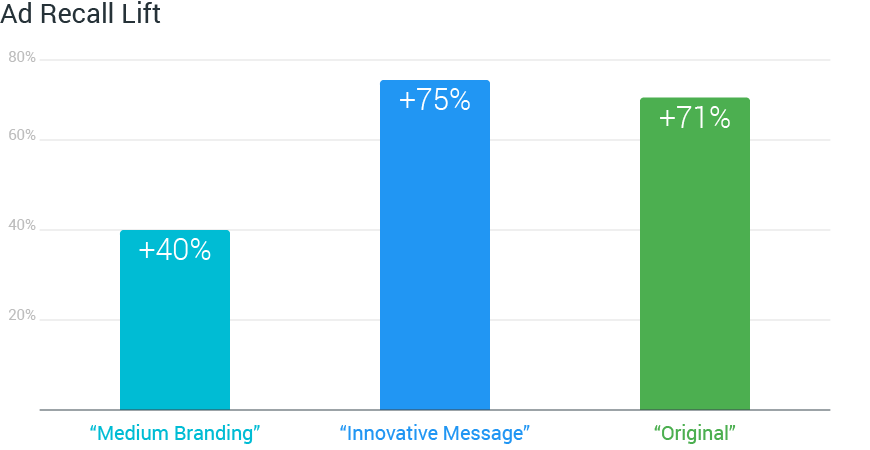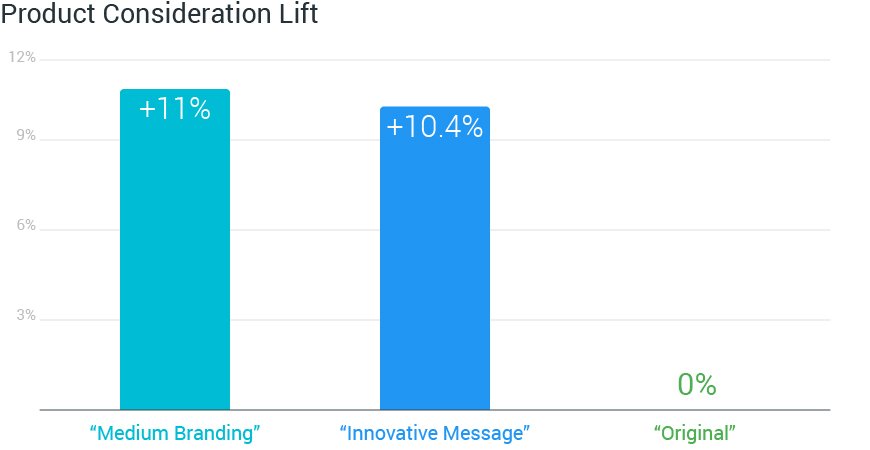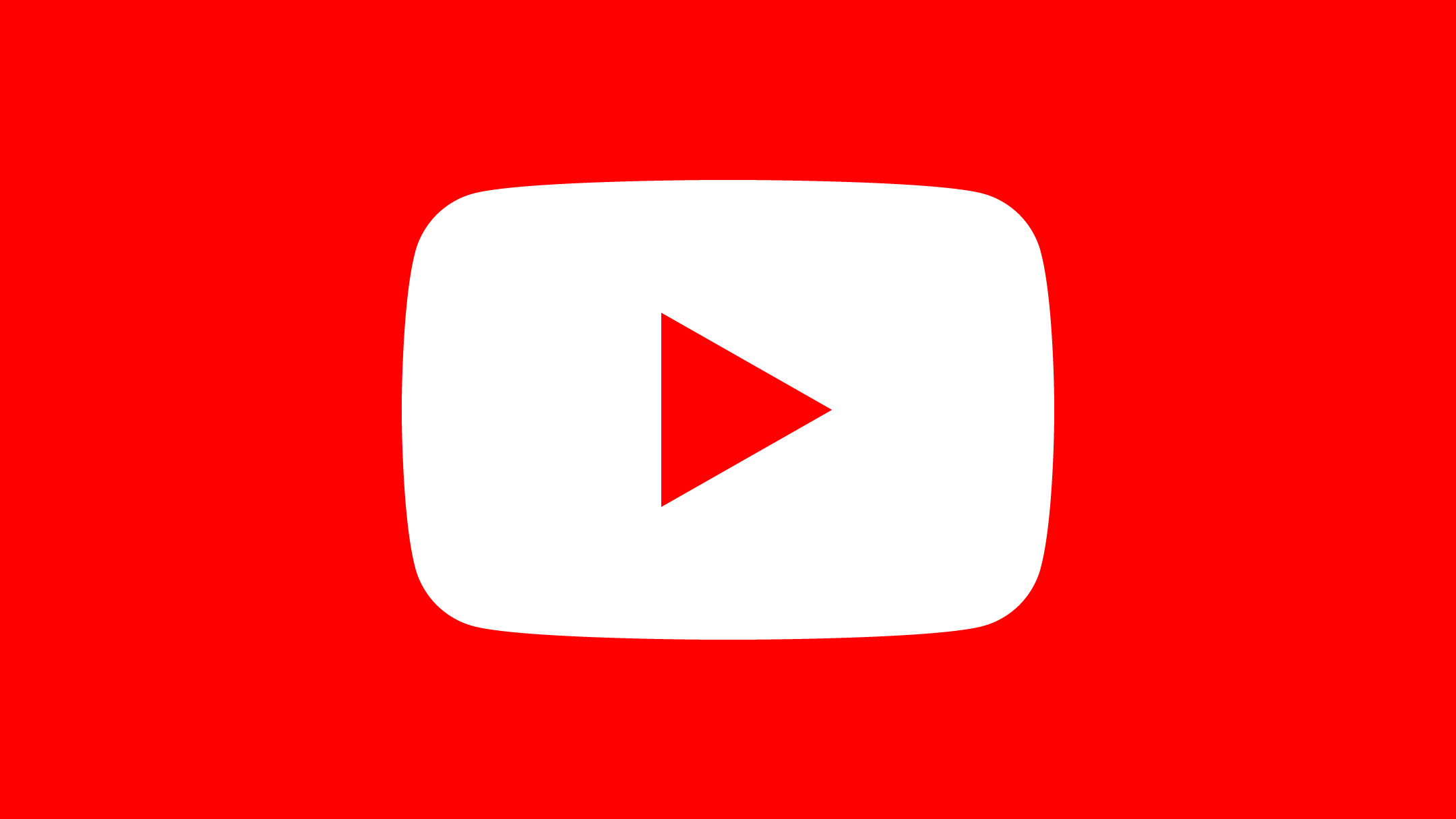In this edition of our Unskippable Labs series, we teamed up with Maruti Suzuki to make tweaks to the brand’s existing TVC ads and see what resonates with viewers on YouTube.
Digital video consumption in APAC is on the rise, with mobile replacing TV as the first screen for video. This is a game-changer for advertisers, redefining how and when brands can make meaningful connections with their audiences.
Online video is the next (or current) frontier for many brands in Asia, and our Unskippable Labs series aims to help brands understand what ads resonate online. We work with brands to experiment on different variations of their ad creatives and see what moves the needle. In our latest installment, we partnered with Maruti Suzuki, one of the most popular car manufacturers in India.
Experimenting with brand placement
Getting new ads created and produced often isn’t cheap. That’s why many brands we work with are eager to repurpose and recut the assets they already have to work online. For Maruti Suzuki, we used best practices from previous studies on what it takes to be unskippable and created two new versions of the brand’s existing TV spot.
The ads ran on TrueView, YouTube’s skippable ads format, which allows viewers to skip after the first five seconds. So naturally, we wanted to see how a different approach to branding within that short window would influence brand metrics. Shradha Agarwal, head of digital strategy at Grapes Digital, Maruti’s digital agency, said, “To maximize brand impact on YouTube, it’s important to attract attention in first five seconds. Unskippable Labs helped us analyze three different versions of the TVC and their impact on users, allowing us to identify the best version suited for this digital audience.”
After we showed audience the three ads, we ran Brand Lift studies to determine how each version of the ad impacted view-through rates as well as key brand metrics like ad recall, product consideration, and product interest.
The three cuts
Here are the three cuts we tested:
The “Medium Branding” ad featured a “Smart Hybrid Ciaz” watermark logo during the first five seconds, followed by a traditional voice-over.
The “Innovative Message” ad displayed compelling messaging during the first five seconds. Text in the opening frame prompted viewers about the “futuristic drive” they were about to experience.
The “Original” was the original TV ad. It featured no branding during the first five seconds and was considered “weak branding.”
Smart creative edits can impact brand metrics
Putting the brand front and center in the first two cuts paid off, as “Medium Branding” and “Innovative Message” both had significant impacts on brand metrics overall.
When we further looked at results by cut, we learned four things that can guide APAC marketers as they tinker with brand placement and editing TVCs for digital:
1. All three creatives drove lifts in ad recall
The edits Maruti made to the original TVC ad really worked for the YouTube audience. All three cuts drove lifts in ad recall and brand interest. The combination of Indian actor Ranveer Singh and strong creative seemed to help people remember the brand and the product.

Product interest (as measured by product searches) was also strong for all three cuts: “Original” drove a +600% lift, “Innovative Message” a +690% lift, and “Medium Branding” a +622% lift. Search interest was an important metric for Maruti, as it showed that YouTube ads can effectively get people to take action and engage with the brand directly.
2. Early brand placement works
Clear branding in the opening frames was effective both at driving consideration and retaining audiences that cared about the brand. Placing branding in the first five seconds of “Medium Branding” and “Innovative Message” drove best-in-class lifts in product consideration, especially compared to the original TVC ad (“Original.”)

It could be assumed that view-through rates would decrease when the product is shown in the first five seconds, but that wasn’t true for our experiment. All three ads had similar view-through rates (30% for “Medium Branding,” 29% for “Innovative Message,” and 27% for “Original”) which may indicate that there are few downsides to placing strong branding right at the beginning.
3. More to learn on mobile
We learned several interesting things from how each cut fared on mobile vs. desktop. “Medium Branding” was the only creative to have a strong product consideration lift on mobile (+11%), which we credit to the clear logo and shorter creative that emphasized a key message (about technology). “Innovative Branding” had a +66% product consideration lift on desktop, but likely needed to be adapted specifically for mobile to see the same lifts there. In our view, the opening text frame wasn’t a great fit for mobile.
In the end, our thinking is that merging the opening of “Medium Branding” with the rest of the creative from “Innovative Branding” could lead to strong lifts on both desktop and mobile. We’re also curious to see how keeping the brand logo at the bottom of the ads throughout will influence these key metrics.
4. Smart creative + thoughtful targeting = a winning formula
Starting with great creative—in this case, innovative opening frames with the car featured in the background—is aided immensely by the right targeting. Getting in front of the right people can improve view-through rates, leading to boosts across the board.
The impact of affinity targeting in our experiment was particularly interesting. We saw a +6% increase in view-through rates among “auto enthusiasts” (which makes sense) and a +23% increase in view-through rates among “green living enthusiasts.” The car featured in Maruti’s ad is an environmentally friendly hybrid car, so we were glad to see that the right people were seeing and responding positively to the ads.

Experimenting helps Maruti Suzuki evolve and capture audience attention
Experimenting with the three different cuts helped Maruti Suzuki keep up with how consumers’ behaviors and preferences are changing. “Digital is a key enabler in the automobile customer’s purchase journey today, and marketers need to keep pace with this rapidly evolving ecosystem,” said Sanjeev Handa, vice president and head of marketing at Maruti Suzuki India Ltd. “The beauty of this medium is that it also gives us the leverage and flexibility to try out new and innovative marketing campaigns that drive material impact.”
Small tweaks allowed the brand to turn an existing TVC ad into multiple digital ads—and see which approach to branding is most effective. The results convinced Maruti Suzuki to invest in a digital-only campaign for the next phase of its new product launch and to rework other TVCs to reflect any creative learnings from the experiment.
“With numerous brands competing for the attention of consumers across channels and platforms, finding the right balance between the branding message and product in the first few seconds proved critical in capturing audience attention. The insights we received from this campaign will help us in planning future campaigns,” concluded Handa.






